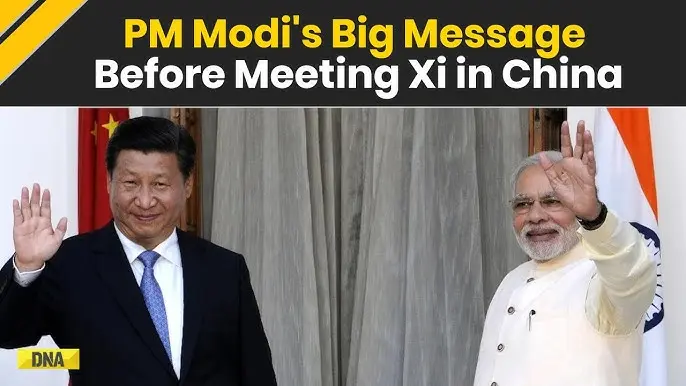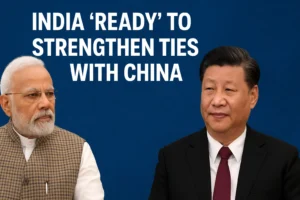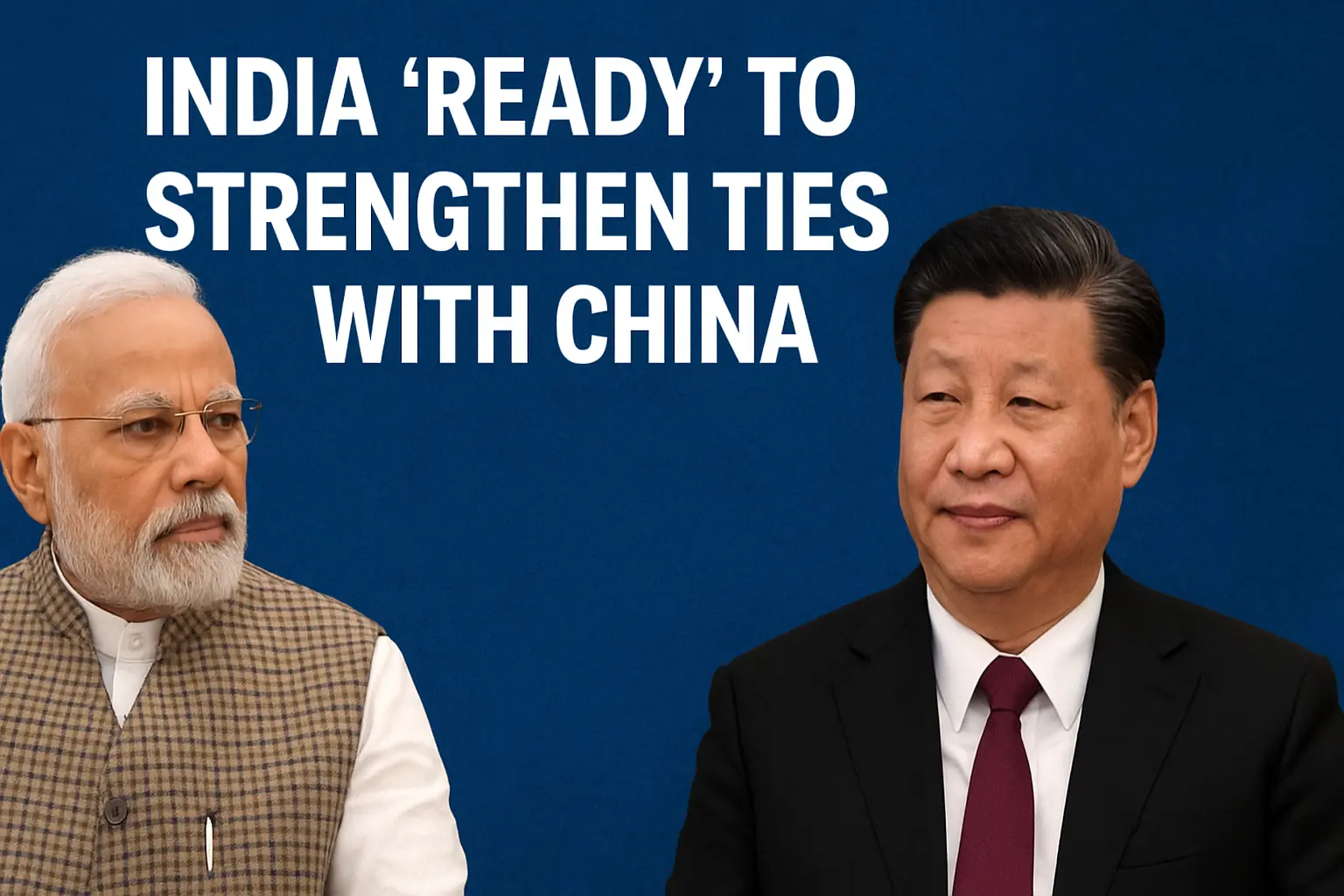Prime Minister Narendra Modi has sent a clear diplomatic message ahead of his crucial meeting with Chinese President Xi Jinping in China: India is prepared to strengthen bilateral ties with China, built on mutual respect and long-term strategy. His statement comes at a time when global geopolitics is shifting and Asia’s two largest economies are being looked upon as stabilizing forces in a turbulent world.
Modi’s Core Message: Stability in a Multi-Polar World
PM Modi emphasized that India’s vision of engagement with China rests on three principles:
- Mutual Respect
- Mutual Interest
- Mutual Sensitivity
He highlighted that India is ready to advance bilateral relations from a strategic and long-term perspective, underlining the need for cooperation in ensuring peace and stability, not just in Asia but globally. According to him, stronger India-China relations are crucial for building a multi-polar world order, where no single power dominates but instead, collective cooperation leads.
Here’s a polished article-style draft based on your points for the topic:
🌏 Why India-China Ties Matter for Global Stability
The relationship between India and China is one of the most important bilateral dynamics in the 21st century. As two of the world’s largest nations — both in terms of population and economic size — the way they engage with each other will directly impact not only Asia but also global peace and prosperity.

Economic Importance
Together, India and China represent over 2.8 billion people, accounting for more than one-third of the global population. Both nations are among the fastest-growing major economies, with China being the world’s second-largest economy and India steadily rising as a global growth engine.
- A cooperative economic partnership could boost trade, investment, and innovation.
- Their collaboration in areas like technology, infrastructure, and renewable energy could transform global markets.
- Conversely, prolonged rivalry could disrupt supply chains and slow worldwide growth.
Geopolitical Balance
In today’s world of trade wars, shifting alliances, and rising protectionism, the India-China equation is central to the balance of power in Asia.
- China’s Belt and Road Initiative (BRI) and India’s Indo-Pacific partnerships reflect competing but influential visions of connectivity.
- A cooperative approach between them could ensure a multipolar Asia, preventing domination by a single power.
- Their stance also matters in international institutions like the United Nations, BRICS, and G20, where collective decisions shape global governance.
Regional Peace and Stability
India and China share one of the world’s longest disputed borders, stretching over 3,400 km. Past flashpoints like Doklam (2017) and Galwan Valley (2020) have shown how tensions can escalate quickly.
- Constructive engagement can help prevent military confrontations and build confidence-building measures (CBMs).
- Peaceful ties would also stabilize South Asia, benefiting neighbors like Nepal, Bhutan, and Bangladesh.
- Moreover, regional organizations such as SCO (Shanghai Cooperation Organisation) rely on India-China cooperation to address terrorism, security, and economic integration.
A Diplomatic Thaw After Years of Strain
This visit is particularly significant because it marks PM Modi’s first trip to China in seven years. Relations between the two nations have been tense due to border clashes, but in recent months, signs of thaw are visible:
- Resumption of limited air connectivity.
- Continued military-level border talks to ease tensions.
- Willingness from both sides to explore economic and cultural cooperation.
(Reuters)
Counterbalancing Global Trade Turbulence

Another key backdrop to Modi’s statement is the ongoing trade tensions with the United States. With new U.S. tariff policies creating uncertainty, Asian economies like India and China are being drawn closer to safeguard their interests.
- India is engaging with both China and Japan simultaneously, balancing regional ties.
- This pragmatic approach reflects New Delhi’s strategy to position itself as a responsible, independent, and multi-aligned power.
Read more:
-
🚘 Gujarat Driving Licence Apply Online 2025 – Complete Guide
-
📱 Made by Google 2025: Four New Pixel Phones, AI Everywhere & More
Key Takeaways from Modi’s Statement
| Topic | Key Insights |
|---|---|
| India’s Position | Ready to improve ties with China from a strategic, long-term perspective. |
| Guiding Principles | Mutual respect, mutual interest, mutual sensitivity. |
| Global Significance | Stronger India-China relations crucial for a multi-polar world. |
| Context | Modi’s first China visit in 7 years amid thawing ties. |
| Geopolitical Relevance | Balancing trade tensions with U.S. while strengthening Asian partnerships. |
Conclusion
PM Modi’s remarks ahead of his meeting with Xi Jinping highlight India’s commitment to fostering constructive ties with China. While challenges remain—particularly on the border issue—both countries recognize that cooperation, not confrontation, will define their role in shaping the future of Asia and the world.
This diplomatic outreach underscores India’s growing role as a pillar of multi-polarity, ensuring that the world order is not unipolar but collaborative.
